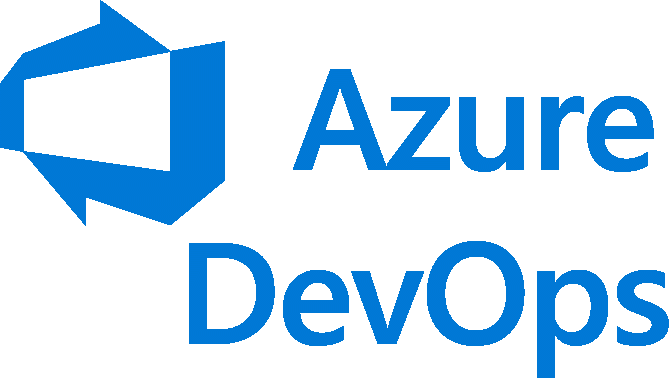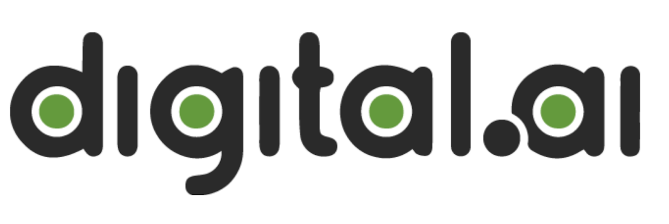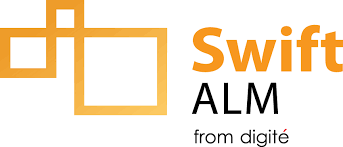What is ALM Software?
ALM tools are software platforms that help organizations manage the entire application lifecycle, from conception to retirement. They typically include features for requirements management, design, development, testing, deployment, and operations.

ALM tools can help organizations to:
- Improve the quality of software by providing a central repository for requirements, design, and test cases
- Increase the efficiency of software development by automating processes and providing a single source of truth for information
- Reduce the risk of errors by tracking changes to requirements and code
- Improve communication and collaboration between stakeholders by providing a shared workspace
ALM software typically integrates with a variety of other software tools, such as source control systems, bug tracking systems, and build automation tools. This allows ALM tools to provide a comprehensive view of the application lifecycle and to automate many of the tasks involved in software development.
Not sure if you need ALM software? Click here to learn more about what Application Lifecycle Management is, as well as the practice’s benefits and importance in modern software development.

Best ALM Software (Updated for 2025)
There are a huge number of different ALM tools available on the market, each with their own strengths and weaknesses. When choosing an ALM tool, it is important to consider the specific needs of your organization. Here are the best ALM software platforms available on the market in 2025:
#1. SpiraTeam

SpiraTeam is an award-winning ALM solution that helps teams manage their program's requirements, releases, iterations, tasks, defects, and code in one environment, with complete traceability. SpiraTeam’s requirements and test case management modules also come with fully customizable workflows. This software is great for program planning and baseline management, and offers robust configuration and version control for artifacts. Bug, issue, and task tracking is easy and makes the work of QA teams a breeze. SpiraTeam is available on-premises or in the cloud, and its features for electronic signatures and document collaboration are especially valuable for companies working in highly regulated industries.

Pros
- Combines test management and project management, offering a holistic ALM solution
- Supports Agile, Waterfall, and Hybrid methodologies, making it versatile for different teams
- Built-in risk management features help prioritize tasks and minimize project risks
Cons
- New users unfamiliar with ALM platforms may require some practice to leverage all features
- Not ideal for teams looking for a single-purpose tool (acts better as a unified ALM platform)
- Limited scalability for very large enterprise-level projects
Cost: Starting at $1,717 per year for three concurrent users
#2. Microsoft Azure DevOps (ADO)

Microsoft’s ALM suite uses Visual Studio, which is one of the most-used integrated development environments in the developer community. Microsoft’s Azure DevOps (ADO) provides good version control and configuration functionality. Due to the fact that Visual Studio lacks requirements management, Azure DevOps can be easily integrated with HP’s products to take advantage of their capabilities in this area. Microsoft’s ALM suite is a particularly good choice for organizations that use a .NET framework, because many .NET developers use Visual Studio and also tend to prefer using Azure DevOps.

Pros
- Seamless integration with Microsoft ecosystem (Visual Studio, Office, etc.)
- Excellent for managing CI/CD pipelines, making it ideal for DevOps-oriented ALM
- Strong version control capabilities via Git and TFVC
Cons
- Licensing costs can be high for smaller teams
- Limited support for non-Microsoft environments and tools
- Requires effort to configure for compliance-heavy industries
Cost: $9,000 per year for three concurrent users (Visual Studio Enterprise), $1,620 per year (Visual Studio Professional)
#3. IBM Rational

IBM offers several products for its ALM solution — some of which are:
- CLM for collaborative lifecycle management
- Engineering Workflow Management tool for managing workflows
- Cloud Continuous Delivery for automating software builds and tests
- Engineering Lifecycle Management Base for managing requirements, quality, changes, project plans, and tracking
IBM products support both Agile and Waterfall methodologies and integrate with IBM Tivoli to support continuous integration. These features make IBM products a good choice for organizations needing to integrate diverse processes. While the product is older with legacy support, IBM has kept it up-to-date to align with emerging ALM trends.

Pros
- Enterprise-grade features tailored for large-scale, compliance-driven projects
- Strong traceability across the entire lifecycle, from requirements to deployment
- Integration with IBM’s broader suite supports complex systems engineering
Cons
- High licensing costs and very steep learning curve
- Bulky interface and slower performance compared to modern tools
- Poor fit for Agile methodologies due to its rigid structure
Cost: Not advertised, contact IBM
#4. Rally (formerly CA Agile Central)

Rally (previously known as CA Agile Central) is a solid ALM tool for businesses that use Agile methods. Its project management features, such as resource planning, are designed with Agile in mind. Rally provides collaboration functionality through Flowdock, which has chat and email features. It also supports the Scaled Agile Framework (SAFe) and offers Agile-specific analytics and metrics based on the Software Development Performance Index. Rally offers both on-premises and SaaS options.

Pros
- Designed specifically for Agile methodologies, with strong sprint planning and tracking features
- Built-in analytics and dashboards to track team performance
- Scales well for large Agile enterprises with multiple teams
Cons
- Limited functionality for traditional or Hybrid methodologies
- High dependency on add-ons for complete ALM capabilities
- May feel overly complex for smaller teams or simple Agile workflows
Cost: Not advertised, contact Broadcom
#5 Jama Software

Jama Software is an ALM tool primarily focused on requirements management and traceability, making it especially useful in industries where compliance and safety are critical. It centralizes requirements, test cases, and design so all stakeholders can collaborate effectively. Jama’s customizable workflows allow teams to adapt the platform to specific project needs, and real-time collaboration tools ensure alignment among distributed teams. It also offers pre-built templates for compliance standards like ISO, FDA, and DO-178C for regulated industries.
While Jama is exceptional at requirements management, its broader lifecycle capabilities (such as testing and deployment tracking) may require integration with other tools. Additionally, its pricing model can be a barrier for smaller organizations.

Pros
- Great requirements management and traceability for compliance-heavy projects
- Industry-specific templates streamline processes in regulated fields like aerospace and healthcare
- Collaboration tools allow for clear communication between stakeholders
Cons
- Lacks advanced testing and deployment features (relies on third-party integrations)
- High price point may be prohibitive for mid-sized organizations
- Best suited for industries requiring compliance, limiting its appeal for general software development
Cost: $5,940 per year for three concurrent users
#6. Jira + Confluence + Bitbucket

By combining a few products from the Atlassian suite like Jira, Confluence, Bitbucket Server, and Bamboo, a competent and full-service ALM tool can be created. Jira is used to plan and track projects and their corresponding issues. Confluence is a collaboration tool for document and knowledge management. Bitbucket Server is a Git-powered code repository that collaborates using requests and inline comments, and Bamboo Server is used for integration, programmed build and testing, deployment, and delivery. All of these together form an ALM platform that integrates with other Atlassian products, although this can be complicated to set up and start using due to the number of systems working together.

Pros
- Integrated ecosystem for tracking, collaboration, and CI/CD
- Flexible workflows make it adaptable for Agile, DevOps, and Hybrid teams
- Extensive third-party app marketplace enhances functionality
Cons
- Can become costly when scaling with multiple tools and users
- Dependency on integrations can complicate workflows for small teams
- Poor traceability compared to dedicated ALM tools like SpiraTeam or Jama
Note: Support of JIRA’s server licenses ended as of Feb 15, 2024, which makes this option less viable.
Cost: Depends on pricing levels of each component
#7. Polarion ALM

Polarion ALM by Siemens is full enterprise-level ALM software that uses a unified data model so traceability and collaboration are enhanced from initial requirements through testing and deployment. What sets Polarion apart is its live documentation feature, which makes all updates visible to all teams and eliminates versioning issues. Its integrations with tools like MATLAB and Simulink make it popular in the manufacturing and engineering industries. However, all of these features and technical integrations mean it has a steep learning curve and is less accessible for smaller teams or projects with less complex requirements.

Pros
- Excellent traceability and compliance support for regulated industries
- Live documentation ensures teams are always working on the most current updates
- Modular design allows organizations to adopt features incrementally
Cons
- Complex setup and configuration require significant time and expertise
- Not intuitive for teams new to ALM or Agile methodologies
- Expensive, making it less accessible for smaller companies
Cost: Not advertised, contact Polarion
#8. CodeBeamer

CodeBeamer is a fully integrated ALM platform by Intland Software that covers each step of the development process. It provides enterprise-level scalability to ensure that applications can grow rapidly, and it lets you easily collaborate with a team of engineers and export documents right from CodeBeamer to Word or Excel for quick data analysis or presentations. Because of this, it’s primarily used for complex, multidisciplinary development projects, particularly those involving risk and safety management. While powerful, CodeBeamer’s advanced capabilities can be overwhelming for teams without stringent compliance needs. Its pricing may also be prohibitive for smaller organizations.

Pros
- Industry-specific templates for safety-critical fields (automotive, medical devices, etc.)
- Supports Hybrid and DevOps workflows, offering strong flexibility
- Risk management and quality engineering features help mitigate project risks
Cons
- Overwhelming for teams without specific compliance or risk needs
- Licensing can be costly for smaller or less complex projects
- Less Agile-focused than tools like SpiraTeam, Rally, or Agility
Cost: $4,500 per year for three concurrent users
#9. Digital.ai Agility (previously CollabNet VersionOne) + TeamForge

Digital.ai’s platform Agility (formerly VersionOne) is a good option for enterprise Agile planning, while TeamForge is often used for application lifecycle management. Agility can help teams envision, plan, and deliver software. It includes features like Kanban boards, burndown charts, and real-time analytics, enabling teams to monitor progress and adjust workflows as needed. TeamForge is an application development, collaboration, and delivery platform that supports a variety of workflows and frameworks from Hybrid and Agile development methodologies.
However, the focus on Hybrid and Agile may limit its utility for teams that need support for traditional or Waterfall methodologies. It also lacks some of the advanced compliance and risk management features offered by other ALM software on this list.

Pros
- Fully optimized for Agile workflows with features like Kanban boards and backlog management
- Integration with CI/CD tools ensures seamless deployment processes
- Real-time analytics help teams monitor and adjust progress quickly
Cons
- Limited capabilities for traditional or compliance-heavy development lifecycles
- Less effective for large-scale traceability compared to enterprise-grade ALM tools
- Can feel too narrowly focused on Agile for teams requiring broader lifecycle support
Cost: $1,404 per year for three concurrent users (Ultimate), $1,044 per year (Enterprise)
#10. OpenText ALM (formerly Micro Focus ALM)

OpenText ALM (previously known as Micro Focus ALM) is a Lean, Agile, and DevOps tool that allows teams of all sizes to deliver high-quality software with greater speed. It is particularly suited for large-scale projects requiring end-to-end lifecycle management, and integrates well with other enterprise tools like SAP and Salesforce. OpenText ALM provides robust tracking & reporting and seamless integration of various project-related tasks, and can connect to email systems to send emails to team members. However, the platform’s complexity and price make it less viable for small or medium-sized teams, as setup and onboarding can be costly and time-intensive.

/Pros
- Comprehensive features for requirements management, testing, and defect tracking
- Strong traceability and compliance capabilities for regulated industries
- Integrates well with other enterprise tools like SAP and Salesforce
Cons
- High cost and complexity make it inaccessible for smaller teams
- Steep learning curve for new users
- Interface feels outdated compared to modern alternatives
Cost: Not advertised, contact OpenText
#11. Targetprocess

Targetprocess helps agile teams scale, providing support for LeSS, SAFe, and custom Agile frameworks, and is a good option for small to mid-sized companies who aim to scale quickly. The software provides an intuitive and easy-to-navigate interface with reasonable tools for workflow configuration, requirements management, task management, web-based administration, and reporting at the portfolio, program, and product levels. Additionally, they offer a Service Desk standalone app that enables issue management in the same standard environment as your development.

Pros
- Highly visual interface with customizable dashboards for agile workflows
- Strong focus on managing cross-team dependencies in scaled agile frameworks
- Flexible enough to support both Agile and Waterfall projects
Cons
- Limited testing and defect tracking features compared to full-fledged ALM tools
- Advanced features may still feel overwhelming for small teams
- Heavy reliance on customization, which can increase setup time
Cost: Not advertised, contact Targetprocess
#12. Tuleap

Tuleap is an open-source ALM platform that offers a wide range of tools for managing software development projects, including requirements management, version control, and defect tracking. Its flexibility and transparency appeal to teams looking for a highly customizable ALM solution. While Tuleap is an open-source tool, it’s not free — although it is still relatively cost-effective and highly adaptable compared to other options on this list. Its integration with Git and SVN also provides effective version control, while plugins allow for additional functionality.
However, as with many open-source tools, Tuleap requires technical expertise for installation, configuration, and maintenance. Its community support, while active, may not match the level of commercial alternatives for complex issues.

Pros
- Open-source, making it cost-effective and customizable
- Supports both Agile and Waterfall methodologies, catering to diverse team needs
- Includes built-in version control and issue tracking, reducing reliance on third-party tools
Cons
- Requires significant technical expertise for setup and maintenance
- Community support may not be sufficient for resolving complex issues
- Lacks the polish and advanced features of commercial alternatives
Cost: $864 per year for three concurrent users (on-premises), $936 per year (Cloud Premium)
ALM Software Honorable Mentions
In addition to the tools that made our top 12 list above, we’ve collected further notable options, depending on your specific needs, budget, and industry:
- Orcanos
- PractiTest
- Visure
- AccelQ
- Rocket Aldon
- ALM Complete
- DevSuite
- Helix ALM
- Modern Requirements4DevOps
- OneOps
- Planview AgilePlace
- qTest
- Relution
How to Choose the Right ALM Software
With so many ALM tools available, it might be easy to eliminate obvious outliers from your list to get a handful of final options — but it can often be difficult to make a final decision. When evaluating your shortlist of platforms, we recommend considering the following aspects and functionalities to find the right fit:
- Requirements Management: Part of any good ALM tool is the ability to capture, manage, and trace requirements through the lifecycle of your project.
- Test Management: Can the tool support the creation, execution, and tracking of test cases (preferably with automated functionality to improve efficiency)?
- Defect Tracking: Your ALM software needs to be able to log, track, prioritize, and support the resolution of bugs identified throughout the lifecycle.
- Reporting: Management is far less effective when it lacks data-driven insights, so look for a tool that offers helpful dashboards and real-time metrics.
- Collaboration: Teams work better together when they can communicate and collaborate on the same project at the same time (this is especially true for remote teams).
- Integrations: You likely already use a set of established tools, so find a new platform that can integrate with them to avoid a complete overhaul of everyone’s workflows.
- Customization: Every team and every project is different, so the ability to tailor an ALM system to your needs is crucial for efficiency and success.
- Scalability: Teams change over time, and a good tool will grow with you — look for flexible scaling so you don’t need to find yet another new tool down the road.
- Ease of Use: Adoption is critical to the long-term success of a tool, so look for ALM software that is intuitive and that team members will feel comfortable using.
- Support: Problems and questions inevitably arise with new software, so do the platforms you’re evaluating include helpful support for troubleshooting?
- Pricing: When it comes down to it, pricing is often the be-all and end-all, but make sure to look at pricing structures beyond the simple price — are some tools trying to lock you into a 36-month minimum contract?
Additional ALM Resources
Get the Best ALM Features & Ecosystem With Spira
SpiraTeam is the ideal ALM tool for most businesses. It offers a complete suite of functionalities, seamless integration with popular development tools, powerful insights, and exceptional customer support. Even better, it’s able to scale and adapt to you and your team’s needs to improve cycle processes in no time. You can also rest assured that you’re staying on the cutting edge of ALM functionality with Spira features like AI-driven automation. Hear from our partners why SpiraTeam is an invaluable tool, or try a free 30-day trial to see for yourself how it streamlines ALM and leads to more successful software development.